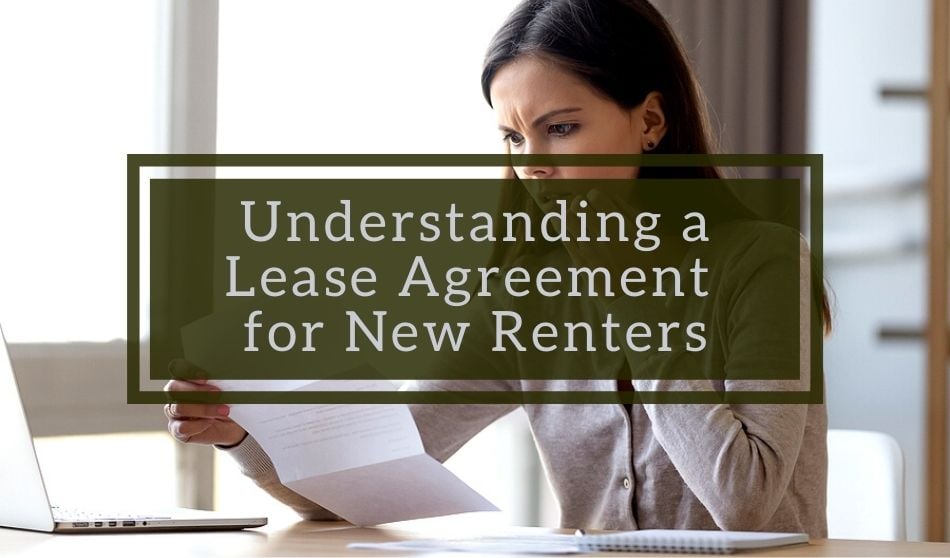Finally moving into your own space is an exciting time for most people, but the lease signing process can be confusing – especially if you’ve never been through it before. A lease is a binding contract that outlines the conditions for tenancy in a rental property.
Understanding the Lease Language
The most important thing to do before you sign your lease is to know what it contains. This includes getting familiar with the language in the lease that you might not understand. Here are some of the most common clauses and terms that you will see in leases, but there are many others.
Term of the Tenancy
The ‘term’ in this case is the length of the rental. The lease should include specific details about your tenancy, including the beginning date. It should also specify whether or not what you are signing is a month-to-month rental agreement or a lease. While these labels are sometimes used interchangeably, the primary difference between these two is the length of time they cover. A lease typically covers a year, while rental agreements generally cover 30 days or on a month-to-month basis.
Learn more: Pros and Cons of a Fixed-Term Lease versus a Month-to-Month Lease
Rent Increases
Keep an eye out for any information that has to do with annual or routine rent increases. While rent increases are generally governed by their own statutes, there are times when it is built into the lease. These are known as escalating rent charges. If you aren’t paying attention when you first sign your lease, then you’ll be surprised when your rent goes up $50 a month after the first year.
Reasonable Cleanliness
Most leases and rental agreements include a clause that discusses what the condition of your new rental unit needs to be while you live there. When you sign the lease, these clauses mean that you agree that the unit will be in a habitable condition and that you will alert the landlord if any dangerous conditions arise. This also includes making sure that you don’t encourage any mildew, insect, or vermin infestations.
Extended Absence
There can be clauses in the lease that require you to notify your landlord or property manager if you plan on being away from your rental unit for several consecutive days. Some landlords even require notice if you’ll be out of town for only a few days. The purpose of these clauses is to give landlords or property managers the right to enter the rental unit while you are gone. The purpose is for them to be able to maintain the property as necessary and to inspect for damage and repairs. These clauses are more common in cold-weather areas where pipes need to be drained in cases of extremely cold temperatures.
Limits on Tenant Behavior
Clauses about tenant behavior often ban tenants from using the rental unit or adjacent areas in ways that violate any laws or ordinances. This includes laws prohibiting the use, possession, or sale of illegal drugs. Intentional damage and annoying/disturbing other tenants or nearby residences are also covered by these clauses. Smoking may also be prohibited, in individual units and common areas.
Inspections
Clauses that cover annual or seasonal inspections of the property give you a good idea of when your landlord will be stopping by. These inspections may include appliance services or seasonal maintenance visits. The lease should give you an idea of when to expect these visits.
What the Lease Should Include
Depending on your situation, there may be some things that you want the written lease to include, even if you’ve discussed it with your landlord and they verbally agreed. A prime example of this is pet policies. If you have a pet such as a dog or a cat, then you need to make sure that they are addressed in the lease. Otherwise, if there is no language that addresses them, then your landlord has grounds for evicting you or getting rid of your pet.
Another issue to look at is how long your guests would be permitted to stay with you. It is common for landlords to limit how many nights guests can stay, or to require approval for them to stay longer than that. This can be challenging for people in relationships as well, and depending on your situation, this could end up being a deal-breaker.
The Signing Process
There is no set answer for who signs the lease first, but you will generally sign before your new landlord or property manager. You should always read through the lease before you sign it. If there are any parts of it that confuse you or that you are unsure about, ask questions. Once it is signed by both parties, then it is legally binding to the terms outlined in the lease.
The lease can be signed in a few different ways. If it is signed in person, then your landlord or property manager should be present and explain all of the important terms to you. If you sign the lease online, you will need to look through everything yourself. This also goes for those managers and landlords who mail out their lease agreements.
After the lease has been signed, then everyone who signed it should receive a copy of the signed lease. It is important to know where this signed copy of the lease is, particularly if conflicts with your landlord come up.







Good info for the new renters.
Glad you find it valuable!